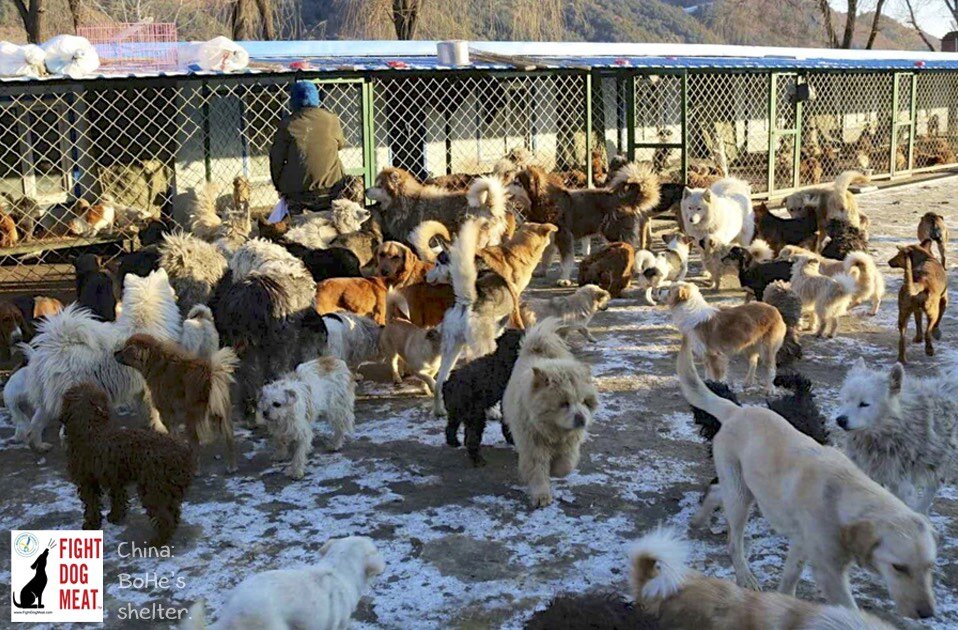
60 million homeless dogs with no safety net.
There's no Humane Society or government funding to care for animals.
Compare that to 70 million homeless dogs in the U.S., where there are 3500 shelters and 10,000 rescue groups and animal sanctuaries. Each year, billions of dollars are donated and spent to rescue, rehab and rehome stray animals.
In China, where owning dogs and cats started in the 90’s with the rise of middle class and economic boom, no NGOS exist yet.
Only through the generosity of private citizens acting on their own are dogs being cared for.
Dedicated and passionate, these courageous citizens provide a sanctuary for many dogs (sometimes hundreds). They put the dogs' life ahead of their own under tremendous financial burden and social opposition. Many of these people don't have much money to spend, but they can't stand the thought of dogs suffering, so they do what they must. Sanctuaries of all sizes have popped up all over China, rescuing dogs off the streets to keep them safe from being beaten, hit by a car or picked up for the dog meat trade. The rescued animals will spend the rest of their lives in the sanctuary because the few people who will adopt only want purebred, young, and healthy puppies. Animal shelters like we know them in the States just don't exist in China due to both lack of funding and lack of interest.
It costs $10 per month to feed a dog. However, most sanctuary monthly income is less than $5 per dog.
This forces the sanctuary operator to use his or her own money (the country’s average monthly salary is $500) to take care of the animals they save. Most sanctuaries struggle to have enough money to feed the dogs. Oftentimes, the sanctuary operator will take leftovers from restaurants, or even food scraps from the garbage to be able to feed the dogs. So while the dogs are safely off the streets, they still aren't much better off. This extreme scarcity of funds often causes the sanctuary operator scramble to pay the electricity or water bill and they even risk being shut down.
Usually the sanctuary is located in an abandoned building.
With no money for construction, sanctuary operators will usually take the first available place to move into because they are in a bind. It is no surprise they often end up in an abandoned building or a site which is very likely not a suitable place for dogs. Sometimes the facility has no electricity or a limited water supply. There isn’t anything beyond a bare building structure, with no windows and doors, a leaky roof, and dirt floors.
They have to move so frequently like gypsies.
With rapid urbanization, China is constantly tearing down old buildings like the ones that house sanctuaries to build new high-rise apartment buildings. Having to move at least once a year is a very common theme among sanctuaries, which is really tough financially plus it puts them in a bind to find another "suitable” location. Most property owners do not want to rent space to dog sanctuaries for fear that it will cause neighbourhood uproar.
Staff to dog ratio is often 1 to over 100.
Most sanctuaries don't have enough help. And there is no operating standard requiring them to have staff. Because sanctuaries are usually located in remote rural areas, it is hard to get volunteers from the city for help even though they may want to. In a country where people often work six days a week, it is just not possible to expect that.
With too few people to walk and care for dogs, facilities can quickly become unsanitary with frequent infectious disease outbreaks.

